As an avid horror fan and lifelong bibliophile, few experiences ignite the same giddy sense of thrill and dread as cracking open a battered, yellowed tome containing some of the most iconic and unsettling stories ever told. Classic horror books have a certain mystique to them – hallowed tomes that have endured and terrified generation after generation of readers through the sheer visceral power of the written word alone.
Growing up in a household of voracious readers and amateur Halloween enthusiasts, stumbling across weathered paperbacks like Shirley Jackson’s The Haunting of Hill House tucked into my parents’ shelves left an indelible imprint on my young, impressionable mind. The musty scent of aged paper, the eerie black and white cover art hinting at sinister forces lurking within… just flipping through those pages ignited my imagination in ways no new release could match.
These classic horror books don’t just dwell in overt gimmicks or gore to manufacture scares. No, the immortal works of Shelley, Stoker, Matheson, and beyond tap into primal psychological fears and existential anxieties with razor-sharp emotional intelligence. The sense of dread seeps in slowly, meticulously, burrowing under your skin until you’re enveloped in a waking literary nightmare you can’t shake.
Now as an adult overseeing my own ever-growing collection of these hallowed masterpieces, I always keep these 19 truly chilling and thought-provoking classic horror books close at hand. Fair warning – once you breach their spine-tingling pages, you may never sleep with the lights off again.
Frankenstein by Mary Shelley (1818)
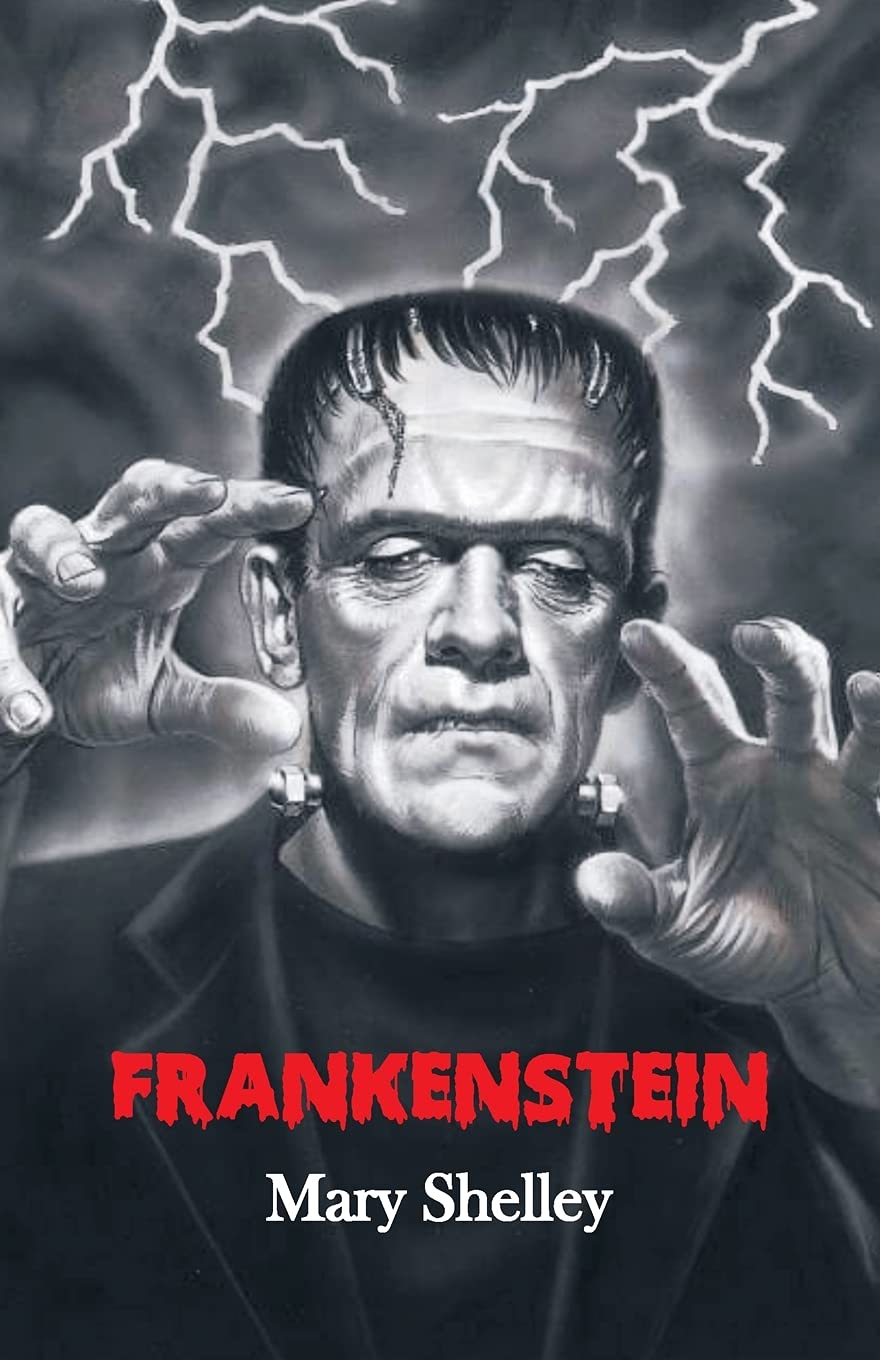 Considered by many to be the very first work of modern horror fiction books, Shelley’s classic gothic tale of a scientist’s lust for forbidden knowledge leading to the birth of a tragic, misunderstood monster kicked off the entire genre canon over 200 years ago. Yet beyond the iconic monster on a slab premise, the true horror lies in Shelley’s poignant social commentary and meditations on abandonment, societal rejection, and the darker sides of human ambition.
Considered by many to be the very first work of modern horror fiction books, Shelley’s classic gothic tale of a scientist’s lust for forbidden knowledge leading to the birth of a tragic, misunderstood monster kicked off the entire genre canon over 200 years ago. Yet beyond the iconic monster on a slab premise, the true horror lies in Shelley’s poignant social commentary and meditations on abandonment, societal rejection, and the darker sides of human ambition.
As a young writer wrestling with grief and her own sense of “monstrous” identity, Shelley tapped into timeless existential themes made all the more chilling by how sympathetic her nameless creation becomes over the course of the story. Victor Frankenstein’s relentless obsession to conquer mortality itself, only to callously reject the life he births from his ungodly experiments, forms the crux of a gut-punch character study still provoking debate today. A horror story for the ages that arguably invented the genre we know.
Dracula by Bram Stoker (1897)
 Stoker’s legendary vampire masterpiece didn’t simply introduce the iconic Count Dracula into our cultural lore – the author effectively remodeled the bloodsucker myth into the hypnotic, seductive creature of darkness we know today. Before Dracula invaded the cursed Transylvanian countryside and ultimately Victorian London, vampire stories were more concerned with the supernatural state’s grotesque physical attributes rather than infusing the monster with chilling psychosexual overtones.
Stoker’s legendary vampire masterpiece didn’t simply introduce the iconic Count Dracula into our cultural lore – the author effectively remodeled the bloodsucker myth into the hypnotic, seductive creature of darkness we know today. Before Dracula invaded the cursed Transylvanian countryside and ultimately Victorian London, vampire stories were more concerned with the supernatural state’s grotesque physical attributes rather than infusing the monster with chilling psychosexual overtones.
Through the lens of an epistolary narration that heightens suspense and intrigue with every ominous character correspondence, Stoker crafts Dracula as a brooding antihero who is both irresistibly charismatic and disturbingly predatory. We’re seduced by his Old World aristocratic grandeur even as we squirm at his perverse acts of blood worship and demonic evil. Almost 125 years later, Stoker’s vampire king remains the ultimate immortal boogeyman whose powers of corruption and dominance exert an otherworldly, timeless allure.
The Strange Case of Dr Jekyll and Mr Hyde by Robert Louis Stevenson (1886)
 On its surface, Robert Louis Stevenson’s gothic novella feels like a straightforward tale of mad science and a well-meaning man tainted by his own malicious secret identity unleashed through a monstrous transformation. But dig deeper into the book’s beguiling mystery, and you’ll find resonating themes of repression, the inescapable duality of human nature, and an unflinching interrogation of society’s hypocritical morality codes.
On its surface, Robert Louis Stevenson’s gothic novella feels like a straightforward tale of mad science and a well-meaning man tainted by his own malicious secret identity unleashed through a monstrous transformation. But dig deeper into the book’s beguiling mystery, and you’ll find resonating themes of repression, the inescapable duality of human nature, and an unflinching interrogation of society’s hypocritical morality codes.
Dr. Jekyll’s gradual unraveling and tragic embrace of his monstrous Hyde persona isn’t just a campy horror romp – it’s a harrowing depiction of one man’s descent into depraved self-destruction fueled by his own insatiable ego and rebellion against Victorian propriety. Stevenson plumbs profound depths, challenging us to confront whether there are darker, more sinister impulses lurking behind our own most upright exteriors. A taut, unnerving morality play whose final act has seared itself into the collective unconscious over a century later.
The Picture of Dorian Gray by Oscar Wilde (1890)
 Leave it to Oscar Wilde to pen a lush gothic horror story that doubles as both a twisted metaphysical character study and biting satirical deconstruction of British upper crust society’s hedonistic superficiality. While perhaps lighter than some of the other classic books on this list in terms of outright shocks or gore, The Picture of Dorian Gray is a sublime piece of aesthetic horror that radiates unsettling existential dread.
Leave it to Oscar Wilde to pen a lush gothic horror story that doubles as both a twisted metaphysical character study and biting satirical deconstruction of British upper crust society’s hedonistic superficiality. While perhaps lighter than some of the other classic books on this list in terms of outright shocks or gore, The Picture of Dorian Gray is a sublime piece of aesthetic horror that radiates unsettling existential dread.
The idea of an impossibly beautiful narcissist making a Faustian bargain to remain untouched by the wages of age and sin while a damning portrait bears the grotesque markings of his soul’s deteriorating morality is haunting in its simplicity. Yet Wilde’s impeccable wit and sharp cultural criticisms elevate Dorian’s gradual slide into the depths of depravity into a chilling horror tale that is as intellectually provocative as it is queasily disturbing. An immortal mediation on vanity, vice, and the pernicious power of influence.
The Turn of the Screw by Henry James (1898)
 I still vividly recall the chilling mind-bender of a book report I had to give in high school on Henry James’ early 20th-century classic horror novella The Turn of the Screw. One of the most ambiguous and unsettling ghost stories ever committed to the page, the book is an unreliable narrator’s first-hand account of her psychologically and spiritually fraught experiences as a newly appointed governess for two mysteriously “haunted” children.
I still vividly recall the chilling mind-bender of a book report I had to give in high school on Henry James’ early 20th-century classic horror novella The Turn of the Screw. One of the most ambiguous and unsettling ghost stories ever committed to the page, the book is an unreliable narrator’s first-hand account of her psychologically and spiritually fraught experiences as a newly appointed governess for two mysteriously “haunted” children.
The tension mounts through a series of strange incidents and unexplained phenomena that leave James’ rigid Victorian protagonist questioning her sanity and forced to confront supernatural forces seemingly hellbent on corrupting the souls of her saccharine young wards. But are the evil spirits she perceives visiting this remote country estate figments of her repressed sexuality and neuroses… or something far more diabolical at play? James’ modernist masterpiece is a fever dream posing profound questions about the depths of human consciousness that will leave you as disturbed as its increasingly unhinged central figure.
The Haunting of Hill House by Shirley Jackson (1959)
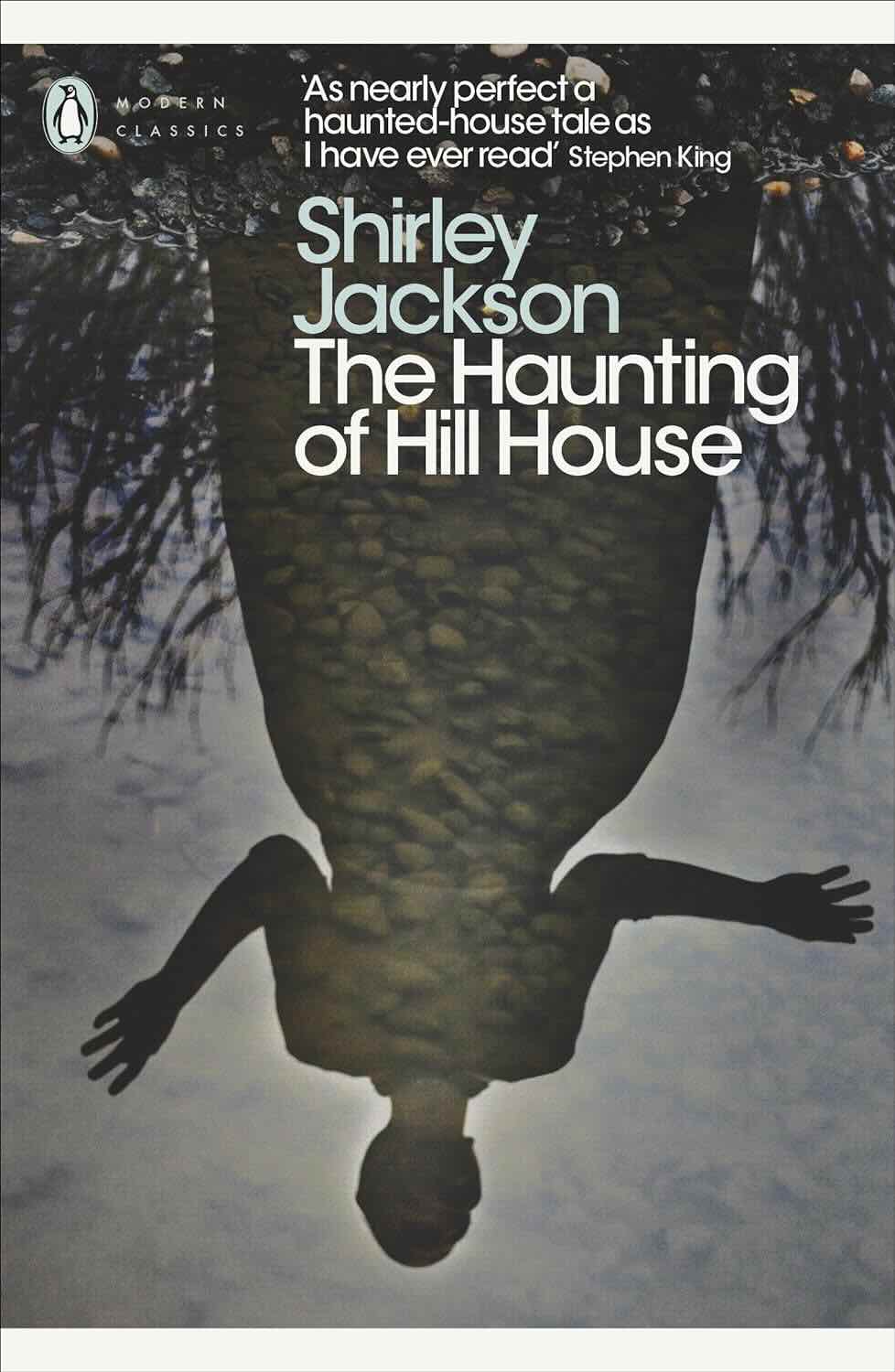 Over six decades after its debut, this subtle psychological horror classic book stands as one of the most chilling and influential haunted house stories ever told. Shirley Jackson was a pioneer at crafting atmosphere and emotional dread without leaning on overt scares or crude shock value. And Hill House is a highwater mark in her canon of uniquely intimate yet cosmic horror yarns.
Over six decades after its debut, this subtle psychological horror classic book stands as one of the most chilling and influential haunted house stories ever told. Shirley Jackson was a pioneer at crafting atmosphere and emotional dread without leaning on overt scares or crude shock value. And Hill House is a highwater mark in her canon of uniquely intimate yet cosmic horror yarns.
On the surface the setup is rather simple and self-aware: Four strangers (including an intrepid supernatural investigator and Jackson’s put-upon protagonist Eleanor), each with a history of harrowing unexplained encounters, are invited to spend time in an isolated manor with a malevolent reputation. But from the moment they cross those ominous grounds, Jackson envelops her audience in a haunting atmosphere of creeping existential terror and personal psychodrama that corrodes the very notion of reality itself.
Through Eleanor’s increasing fracture and torment, Jackson dissects gender, mental health, sexuality, and vulnerability themes that still pack a disquieting punch. And the house itself, with its overt phallic and womb-like symbolism, becomes a sentient spectral prism, refracting each character’s darkest demons back with waking nightmare clarity. A labyrinthine haunting that seeps into the very soul of its luckless inhabitants… and transfixed readers.
I Am Legend by Richard Matheson (1954)
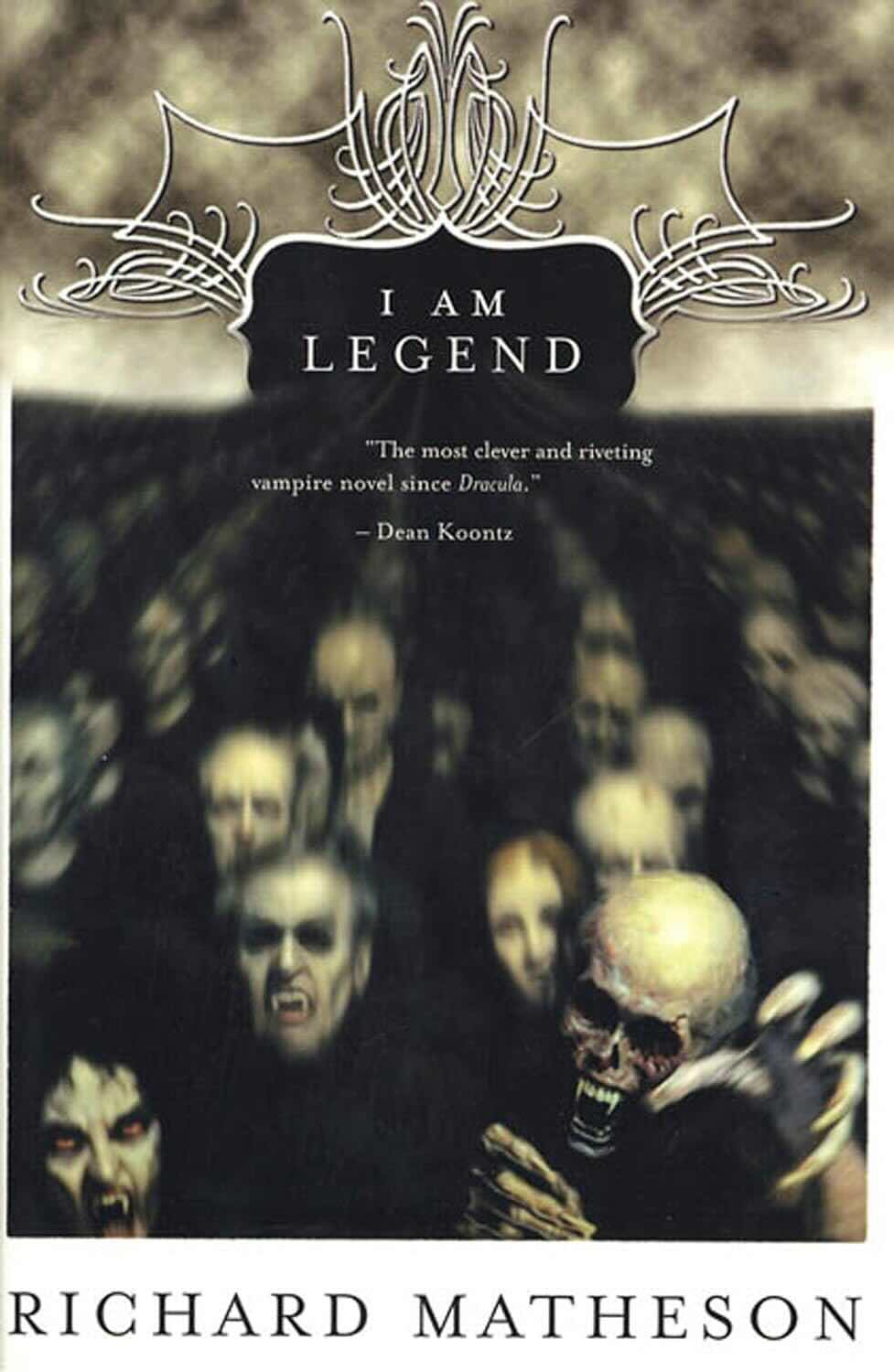 In the same seminal year Creature from the Black Lagoon and Them! helped kickstart modern movie monster mania, Matheson’s 1954 post-apocalyptic classic horror book definitively carved out the DNA for all future zombie mythology and tales of humanity’s last stand against undead viral armageddon. So much of what we take for granted in the modern zombie zeitgeist – concepts like being “the last man on earth,” hordes of mindless flesh eaters, panicked thoughts of keeping them out at night, etc. – can be traced back to Matheson’s pioneering imagination.
In the same seminal year Creature from the Black Lagoon and Them! helped kickstart modern movie monster mania, Matheson’s 1954 post-apocalyptic classic horror book definitively carved out the DNA for all future zombie mythology and tales of humanity’s last stand against undead viral armageddon. So much of what we take for granted in the modern zombie zeitgeist – concepts like being “the last man on earth,” hordes of mindless flesh eaters, panicked thoughts of keeping them out at night, etc. – can be traced back to Matheson’s pioneering imagination.
Yet beyond those now-ubiquitous tropes, I Am Legend remains a starkly poignant, existentially devastating masterclass in isolation and psychological disintegration. By anchoring his end-of-the-world horror show through the prism of Robert Neville’s haunted daily reality manning a one-man struggle against an endless army of nocturnal vampiric “ghouls,” Matheson infuses the narrative with Hitchcockian suspense and visceral you-are-there verisimilitude. And the gradual devolution of Neville’s human identity, as the years of crippling loneliness and sleeplessness begin whittling away his grip on sanity, is more chilling than any sequence of graphic shocks.
I Am Legend strips the zombie apocalypse motif down to its most primal, spiritual and psychological core: our mortal terror of being the last one left alive, trapped in a dead world overrun by soulless evil we cannot comprehend. It doesn’t ask what virus or catalyst caused this nightmare – only that you experience the unspeakable horror of clinging to your own fragile mortality in a void of absolute, unbearable solitude.
The Shining by Stephen King (1977)
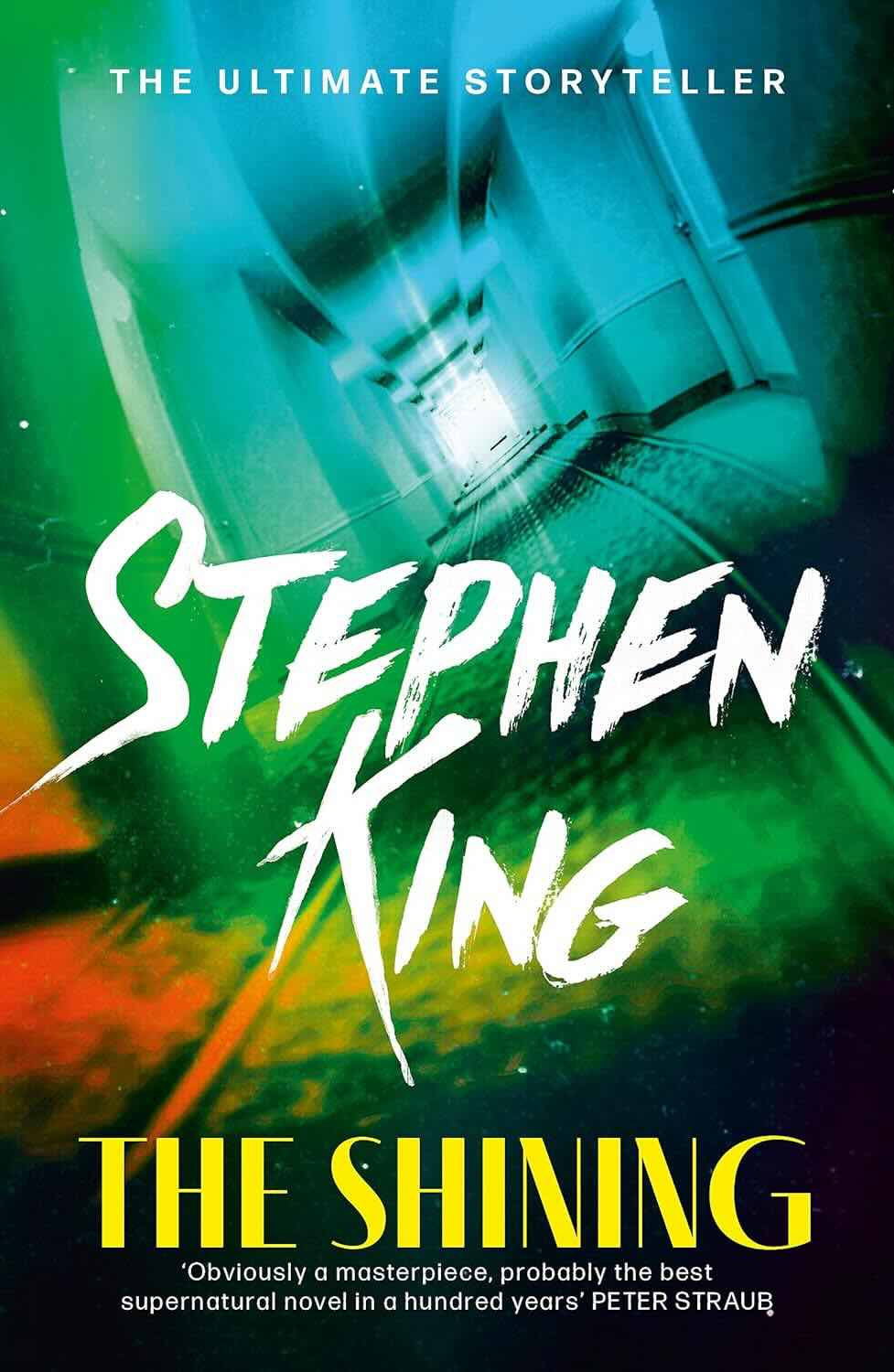 Is there a modern horror book more iconic, more dissected and absorbed into our pop culture consciousness than Stephen King’s 1977 classic masterpiece of domestic terror and existential dread, The Shining? For many contemporary readers, their first exposure to the tale of struggling writer Jack Torrance’s mental disintegration while marooned as winter caretaker of the ominously haunted Overlook Hotel likely came through Stanley Kubrick’s classic 1980 film.
Is there a modern horror book more iconic, more dissected and absorbed into our pop culture consciousness than Stephen King’s 1977 classic masterpiece of domestic terror and existential dread, The Shining? For many contemporary readers, their first exposure to the tale of struggling writer Jack Torrance’s mental disintegration while marooned as winter caretaker of the ominously haunted Overlook Hotel likely came through Stanley Kubrick’s classic 1980 film.
But as spellbinding as that visual translation remains, nothing can quite capture the delirious intensity of King’s original text, with its deeper dives into intergenerational trauma, the crushing psychic weight of artistic failure, and his deeply disturbing channeling of the id-warping power of malign supernatural evil on a feeble mortal psyche.
King takes the archetypal haunted cabin in the woods premise and mutates it to cosmic horror levels, transforming the cavernous, malevolently sentient Overlook into a gaping psychic maw of depravity absorbing all of Jack’s deepest fears and darkest impulses. With sentences flowing in a mesmerizing free-associative stream of consciousness that places the reader directly into the toxic recesses of Jack’s deteriorating mind, the sense of bone-deep claustrophobia and isolation gradually becomes as overpowering as the spirits themselves.
The Shining transcends its ghost story conventions to become an unflinching existential reckoning about the very nature of evil – the dread of losing oneself, of being forced to confront every traumatic shadow and repressed darkness within. By its conclusion, as the ghastly entity of the Overlook has fully subsumed Jack’s humanity, King reminds us that there are horrors both supernatural and all too human lurking wherever we gaze into the fractured abyss of ourselves.
The Books of Blood by Clive Barker (1984-1985)
 You could argue the 80s horror renaissance was in desperate need of an iconoclastic genre-redefining voice like Clive Barker before his seminal classic Books of Blood anthology arrived to drag the stagnant scene out of the slasher movie doldrums and back to an era of unbridled, subversive imagination. Drawing on his background as an avant garde playwright and visual artist, Barker’s provocative visions of the macabre and penchant for baroque Grand Guignol excess electrified a whole new generation of splatterpunk aficionados.
You could argue the 80s horror renaissance was in desperate need of an iconoclastic genre-redefining voice like Clive Barker before his seminal classic Books of Blood anthology arrived to drag the stagnant scene out of the slasher movie doldrums and back to an era of unbridled, subversive imagination. Drawing on his background as an avant garde playwright and visual artist, Barker’s provocative visions of the macabre and penchant for baroque Grand Guignol excess electrified a whole new generation of splatterpunk aficionados.
From his unapologetically erotic and cerebral opening short “The Book of Blood,” skirting blasphemy through tales of pseudo-Biblical apocrypha, to the now-legendary origin story for his Hellraiser property about mystic puzzle boxes and masochistic interdimensional demonic entities, these volumes overflow with profane and poetic grotesquery. But Barker’s keen grasp of the surreal, coupled with his unflinching intensity, ensures his brand of nightmarish imagery lingers in the subconscious like fingernail scratches on the psyche.
Sadomasochistic metaphysical fever dreams invoking Pan and snake gods… visions of remote villages harvesting human flesh for eldritch rites and macabre pagan ceremonies… even the playful, meta-textual story about a demonologist’s haunted writing inspiring literal Hell on Earth. In an era when mainstream horror was losing its visceral danger, The Books of Blood were a clarion call for unapologetic literary transgression and fearless artistic extremity from someone who truly understood how to unsettle the soul.
Pet Sematary by Stephen King (1983)
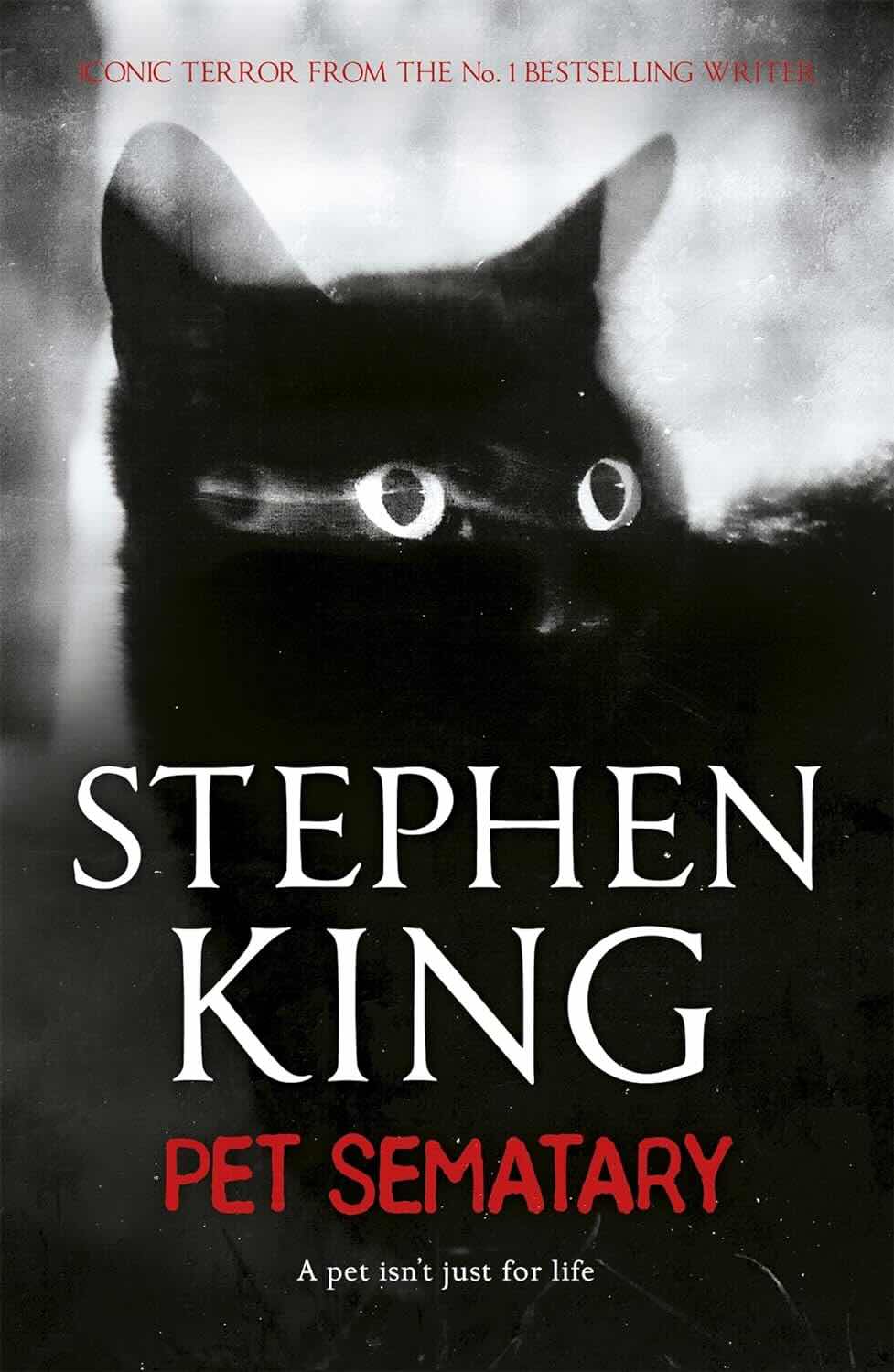 Drawing on his own tragic memories of a traumatic pet death and nearly losing his young son in a near-fatal accident, King conjured what many still regard as the most viscerally unsettling and unrelentingly bleak work in his entire bibliography. Filtered through his patented brew of small-town New England dread and the supernatural converging upon nuclear family domesticity, Pet Sematary transcends expectations to become an unholy reckoning with parental love’s most destructive extremes, and our eternal fear of death’s cruel finality.
Drawing on his own tragic memories of a traumatic pet death and nearly losing his young son in a near-fatal accident, King conjured what many still regard as the most viscerally unsettling and unrelentingly bleak work in his entire bibliography. Filtered through his patented brew of small-town New England dread and the supernatural converging upon nuclear family domesticity, Pet Sematary transcends expectations to become an unholy reckoning with parental love’s most destructive extremes, and our eternal fear of death’s cruel finality.
After relocating to an idyllic country home adjacent to an ancient Native American burial ground whose regenerative powers and cosmic underpinnings are ominously unexplained, the Creed family finds their shaky suburban existence imploding through a series of escalating tragedies. To reveal too many details would deprive you of the truly disturbing series of emotional gut-punches the novel doles out as King forces us to descend into dark pits of personal grief and cross irrevocable ethical boundaries to experience unholy resurrection firsthand.
What particularly elevates King’s harrowing dissection of premature death and toxic grief into the realm of cosmic horror is the novel’s overarching suggestion – through the vaguely defined mythology behind the “Pet Sematary” of the title – that our understanding of mortality is rooted in fundamental misunderstandings about the true cosmic order destined to crush our souls. By the narrative’s inexorable, nihilistic climax, King has laid bare the human Id’s darkest recesses: our deep denial of inevitable death, and the sinister supernatural danger of daring to tamper with fate. A relentlessly bleak, profoundly disturbing slow-burn classic horror book that rattles you to the core.
It by Stephen King (1986)
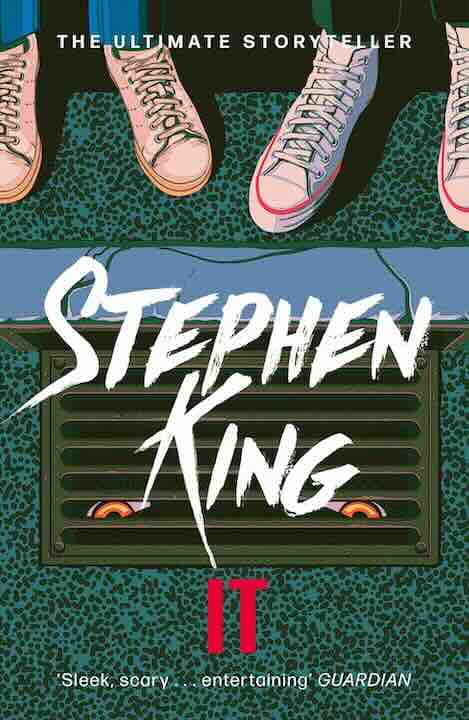 King’s mammoth epic about a nefarious, shape-shifting force of cosmic evil preying on the innocence and trauma of childhood in the sleepy Maine town of Derry is more than just a freakishly involving monster story filled with heart-stoppingly terrifying thrills. Traversing multiple time periods and mining subject matter like domestic abuse, sexual awakening, perversity, grief, aging, and more, It is an all-consuming coming-of-age saga chronicling the loss of innocence and emotional endurance of the human spirit in ways that stick like burred spiritual arrows.
King’s mammoth epic about a nefarious, shape-shifting force of cosmic evil preying on the innocence and trauma of childhood in the sleepy Maine town of Derry is more than just a freakishly involving monster story filled with heart-stoppingly terrifying thrills. Traversing multiple time periods and mining subject matter like domestic abuse, sexual awakening, perversity, grief, aging, and more, It is an all-consuming coming-of-age saga chronicling the loss of innocence and emotional endurance of the human spirit in ways that stick like burred spiritual arrows.
Much has been made and meme’d about the book’s most iconic avatar of fear itself – the terrifying smirking visage of Pennywise the Dancing Clown, who uses his disarmingly childlike appearance to lure and torment his prey. But King’s magnum opus resonates far beyond its seemingly innocuous Stephen King’s Pennywise manifestation. Rather, the true power of It as both a supreme horror narrative and timeless literary achievement comes from its searing emotional core surrounding The Losers Club: The motley crew of outcast youngster protagonists who encounter and are figuratively eaten alive by the perverse shape-shifting “It,” only to reunite decades later as damaged adults struggling to reckon with their lingering unresolved torment.
King weaves an intricate tapestry of intergenerational psychic cyclones and gothic Americana horrors that take time to properly unfurl across his expansive multi-era plotting – but it’s all anchored by his deep-rooted affection and empathy for his young, wounded heroes who become our souls as they’re gnawed away by past terrors. The incomprehensible grotesque evil they confront, in all its babadook grinning clown glory, is simply a manifestation of those innermost unspeakable, darkest, and most dreadful fears.
Ghost Story by Peter Straub (1979)
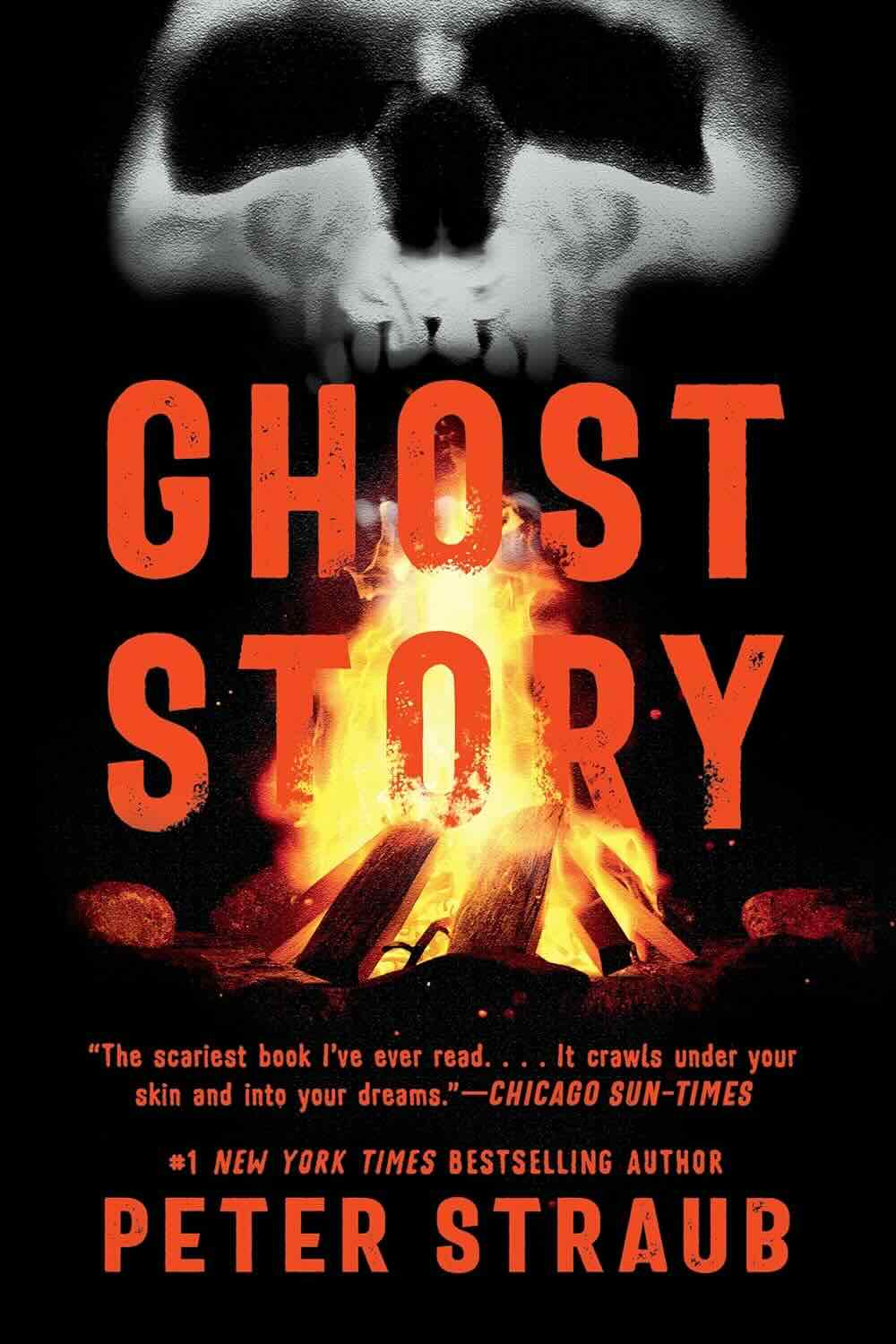 Released at the height of the late 70s supernatural fiction renaissance, Peter Straub’s classic, subtle, and slow-burn haunted tale of aging men tormented by figurative and literal ghosts from their communal past is a masterclass in ramping suspense and all-consuming atmospheric dread.
Released at the height of the late 70s supernatural fiction renaissance, Peter Straub’s classic, subtle, and slow-burn haunted tale of aging men tormented by figurative and literal ghosts from their communal past is a masterclass in ramping suspense and all-consuming atmospheric dread.
On its surface, Ghost Story’s setup about a group of elderly millionaires in the affluent Chestertown enclave being menaced by shadowy forces seemingly stemming from a decades-old tragedy feels fairly standard. But Straub’s meticulous control of mood and uncanny knack for elevating the mundane into the extraordinarily creepy quickly transforms his narrative into one of unshakable existential horror.
By grounding his brand of horror in the mundanities of domestic Americana and intergenerational family legacies, Straub taps into a palpable, lingering sense of dread and dark reckoning that seeps under the skin. Each slow tease of the protagonists’ sinister shared history – and the literal spectral vengeance being unleashed upon them in cycles of violence and possession – is deftly engineered to unhinge you. A profoundly unsettling reminder that our most deeply-buried traumas, no matter how insulated our privilege, can one day manifest as living night terrors.
The Silence of the Lambs by Thomas Harris (1988)
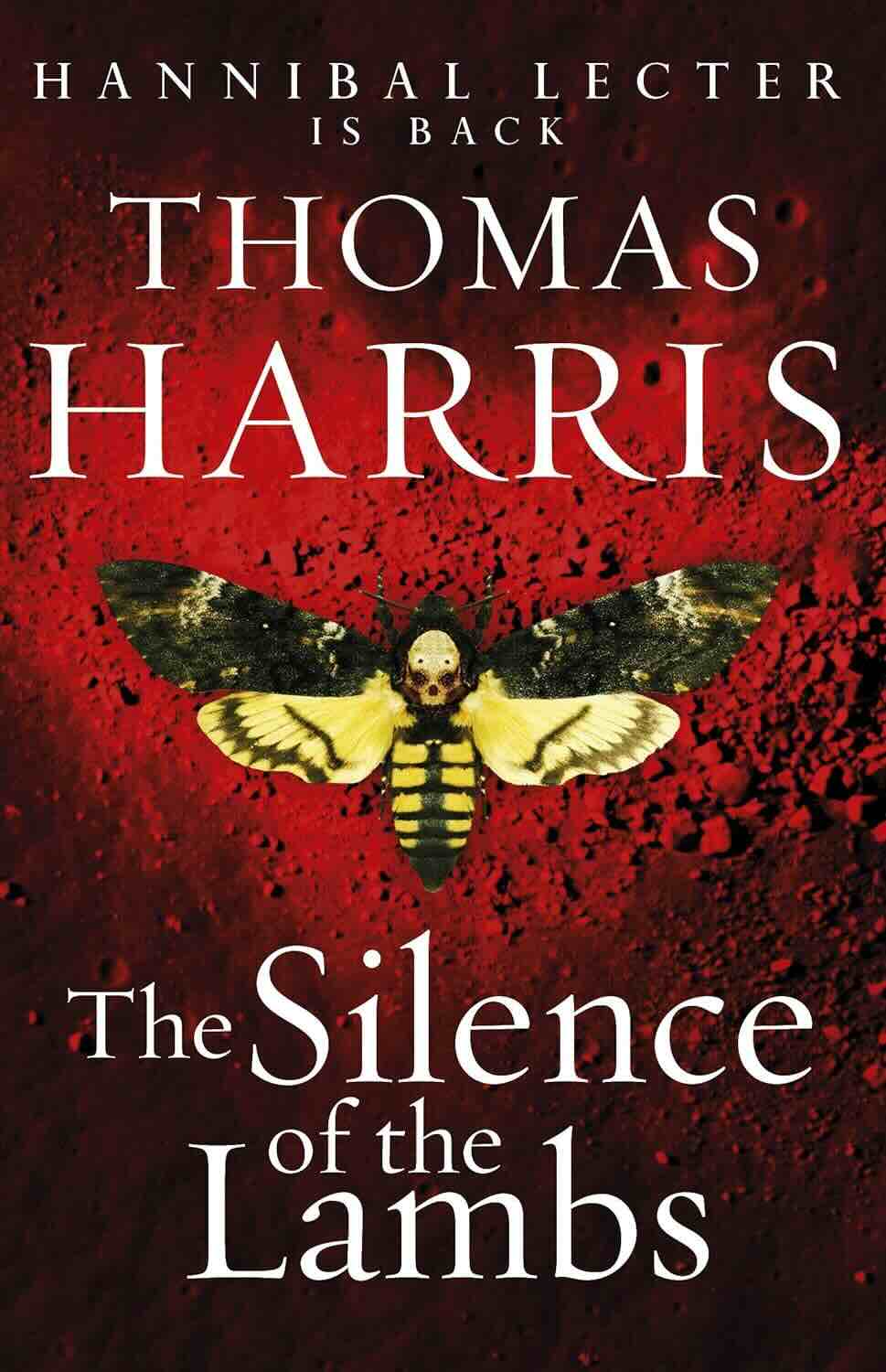 While largely marketed today through its Oscar-winning cinematic interpretation, Thomas Harris’ chilling 1988 book about an FBI trainee enlisting the brilliant cannibalistic psychiatrist Hannibal Lecter to hunt down a serial killer is an exquisitely character-driven classic masterwork of literary horror and criminal suspense in its own right.
While largely marketed today through its Oscar-winning cinematic interpretation, Thomas Harris’ chilling 1988 book about an FBI trainee enlisting the brilliant cannibalistic psychiatrist Hannibal Lecter to hunt down a serial killer is an exquisitely character-driven classic masterwork of literary horror and criminal suspense in its own right.
Harris paints rich psychological portraits of human depravity and social deviance far more insidious than any simple slasher villain. In Lecter, we encounter an unforgettable antihero whose elegant intellectual savagery and masterful powers of manipulative seduction are just as terrifying as his carnivorous appetites. While in the Buffalo Bill character, Harris constructs an iconic modern monster fueled by ugly pathologies of gender identity, sexual repression, and objectification that cut far closer to reality.
Building on his mastery of forensic procedure and clinical criminal profiling first explored in Red Dragon, Harris slowly tightens the screws of suspense and claustrophobia as his heroes find themselves psychologically disassembled by the very sociopaths they’re hunting. It’s the mind games and moral brainteasers keeping you rapt, culminating in a starkly primal climax showcasing just how deep darkness can lurk in souls previously thought good and pure.
The Exorcist by William Peter Blatty (1971)
 Few pieces of 20th century horror fiction books transcended their pulpy genre confines to truly permeate the mainstream cultural zeitgeist quite like William Peter Blatty’s classic demonic possession saga The Exorcist upon its release in 1971. Beyond its enduring status as a cinematic horror touchstone through William Friedkin’s Oscar-winning 1973 film adaptation, Blatty’s original novel has endured as a singularly chilling, psychologically harrowing spiritual experience all its own.
Few pieces of 20th century horror fiction books transcended their pulpy genre confines to truly permeate the mainstream cultural zeitgeist quite like William Peter Blatty’s classic demonic possession saga The Exorcist upon its release in 1971. Beyond its enduring status as a cinematic horror touchstone through William Friedkin’s Oscar-winning 1973 film adaptation, Blatty’s original novel has endured as a singularly chilling, psychologically harrowing spiritual experience all its own.
Drawing deeply from his own reservoirs of Catholic guilt and shaken faith in the wake of personal tragedies like the loss of his mother, Blatty constructs what is arguably the definitive exorcism narrative with an intensity bordering on theological terrorism. We observe the once pious life of actress Chris MacNeil and her adolescent daughter Regan spiral into a chaotic abyss of escalating supernatural phenomena, vulgar bodily violations, and ultimately a full-fledged satanic possession stretching our grasp of experiential horror.
Yet for all its now-infamous scenes of unspeakable desecration and blasphemous indignities exacted on an innocent child’s body by malign forces, The Exorcist’s most chilling quality is the sheer ambiguity of its metaphysical horror and refusal to tidy answer the personal spiritual crises at its core. Blatty’s raw exorcism of his own religious doubts and need for cosmic certainty transforms a simple demon possession yarn into an unflinching descent into the darkest recesses of parental guilt, faith lost, and ontological terror at the root of human existence itself.
The Collector by John Fowles (1963)
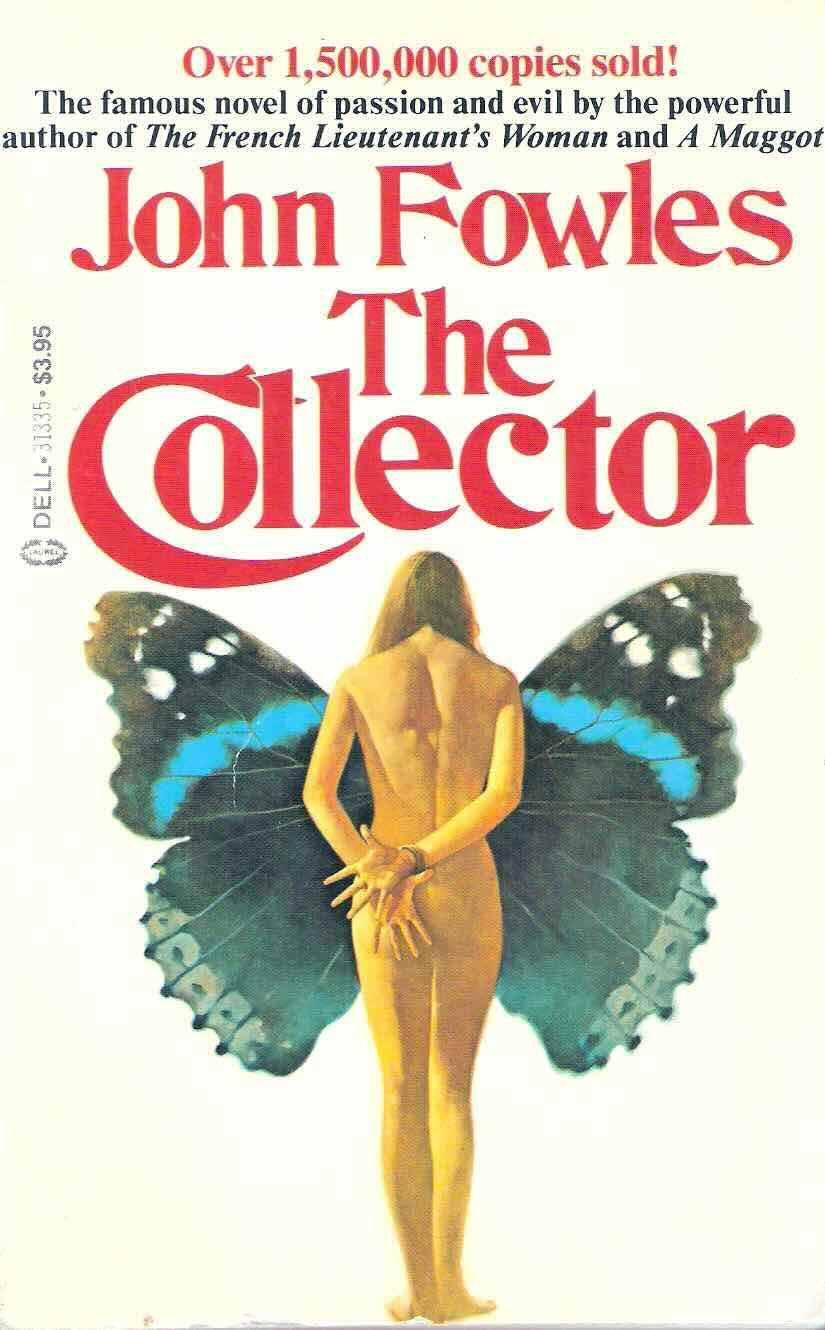 While on surface level a rather straightforward tale of abduction and imprisonment, John Fowles’ 1963 classic horror book cuts far deeper than the voyeuristic premise initially lets on, emerging as a taut psychological character study in human monstrosity posing profound questions about the very nature of identity, agency, and obsessive pathology.
While on surface level a rather straightforward tale of abduction and imprisonment, John Fowles’ 1963 classic horror book cuts far deeper than the voyeuristic premise initially lets on, emerging as a taut psychological character study in human monstrosity posing profound questions about the very nature of identity, agency, and obsessive pathology.
Following the alternating perspectives of a meek Englishman, Frederick Clegg – a lonely lepidopterist with aspirations of bourgeois privilege – and Miranda, the art student he kidnaps and imprisons in the hopes of molding her into his idealized romantic partner. What at first appears a standard lurid thriller quickly spirals into something infinitely more disturbing and thought-provoking as Fowles’ protagonists engage in dizzying psychosexual mind games and recursive interrogation of their own distorted self-perceptions.
The true horror lies in how Fowles relentlessly peels back layers of internal dialogue and moral relativism surrounding Clegg’s twisted motivations for his dehumanizing experimentation and Miranda’s increasingly desperate attempts to dismantle the romanticized delusions empowering her captor. We’re forced to bear witness to the extremes of psychological torture and human agency being eroded before our unblinking eyes, culminating in an unforgettable climax of undiluted malevolence rendered all the more chilling for its shockingly banal realism.
Interview With the Vampire by Anne Rice (1976)
 Having achieved pop culture ubiquity through myriad stage, film, and television adaptations in the ensuing decades, it’s easy to take Anne Rice’s hypnotic 1976 classic horror book – the opening chapter of her vastly influential Vampire Chronicles saga – for granted today as just another sexy modern fang fable. But Interview With the Vampire still stands as one of the most sensuously elegant, cerebral, and chilling reinterpretations of the vampire myth ever put to paper.
Having achieved pop culture ubiquity through myriad stage, film, and television adaptations in the ensuing decades, it’s easy to take Anne Rice’s hypnotic 1976 classic horror book – the opening chapter of her vastly influential Vampire Chronicles saga – for granted today as just another sexy modern fang fable. But Interview With the Vampire still stands as one of the most sensuously elegant, cerebral, and chilling reinterpretations of the vampire myth ever put to paper.
Famously penned by Rice in the throes of unimaginable grief following the tragic loss of her young daughter, Interview filters centuries of lurid bloodlust, baroque European decadence, and sublime immortal romance through the haunted prism of eternal suffering and existential longing. Her vampire antihero Louis, cursed both with forever young vitality and a tortured sentient soul, is reckoning with his cursed nature while granting an uncannily intimate posthuman confessional to a wide-eyed human scribe.
Much of the novel’s erotic power and esoteric allure flows from Rice’s lavish worldbuilding, evoking the New Orleans Creole demimonde and other Old World pockets of gothic aristocracy ripe for allegories on mortal desire. But Louis is truly forever cemented into the literary canon through his vivid portraits of alienated humanity clawing to attain some semblance of dignity amid the cyclical violence and cursed beauty of his vampiric existence. A classic horror novel whose seductive prose clings to your very soul, haunting you with poetic ruminations of eternal grace shadowed by infinite hunger and despair.
The Tomb by H.P. Lovecraft (1917)
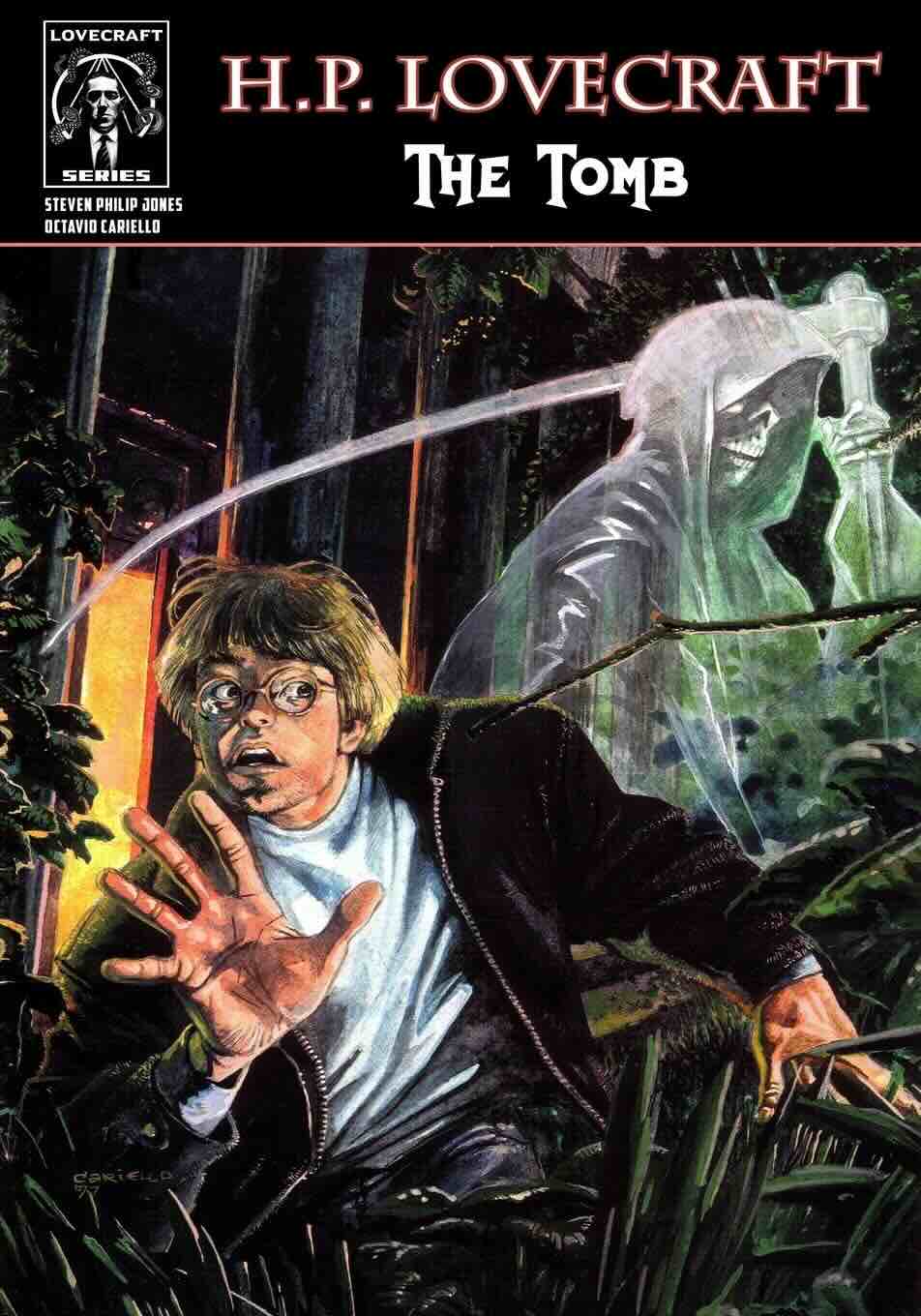 H.P. Lovecraft’s vast body of existentially terrifying folklore and “cosmic horror” fiction has gone on to influence virtually every tentacle and interdimensional abomination since first bubbling up from his feverish imagination. But while many of his most seminal later works like At the Mountains of Madness are now rightly enshrined as the stuff of modern weird fiction legend, my personal favorite from the prolific master of strange still remains his humble 1917 short story The Tomb.
H.P. Lovecraft’s vast body of existentially terrifying folklore and “cosmic horror” fiction has gone on to influence virtually every tentacle and interdimensional abomination since first bubbling up from his feverish imagination. But while many of his most seminal later works like At the Mountains of Madness are now rightly enshrined as the stuff of modern weird fiction legend, my personal favorite from the prolific master of strange still remains his humble 1917 short story The Tomb.
This compact little story about an unrepentant grave robber’s explorations of a cursed sepulcher rife with pagan deities and ancient forces of darkness is pure Lovecraftian magic distilled into raw, bite-sized form. Building from a simple setup into a rich tapestry of ominous atmosphere and slowly unfurling occult mysteries, Lovecraft masterfully cranks his trademark dread and creeping terror inch-by-squirming-inch as you descend further and further into the sinister crypt’s entropic darkness.
Rendered in Lovecraft’s signature blend of arcane lyricism, gnostic intimations, and simmering psychological horror, The Tomb is both a lurid supernatural descent into gruesome Underworld explorations of forbidden knowledge and timeless mystical evil…and also a timely existential allegory about the wages of man’s hubristic desire to plumb arcane riddles best left sealed forever. It’s a towering exercise in short story restraint and steady tonal escalation, and proof of Lovecraft’s peerless command of the cosmic unknown manifesting through mere whispered suggestiveness.
The Other by Thomas Tryon (1971)
 In his most infamous and celebrated classic work of psychological horror, Tryon transports readers to the sun-drenched paradisiacal bliss of 1930s Connecticut and the seemingly idyllic lives of twin brothers Niles and Holland Perry to spin one of the most deliriously depraved and haunting stories of psychosexual torment and self-destructive madness ever put to paper.
In his most infamous and celebrated classic work of psychological horror, Tryon transports readers to the sun-drenched paradisiacal bliss of 1930s Connecticut and the seemingly idyllic lives of twin brothers Niles and Holland Perry to spin one of the most deliriously depraved and haunting stories of psychosexual torment and self-destructive madness ever put to paper.
The Other is a true slow burn of repressed depravity, with Tryon lulling audiences into a dream-like pastoral trance before injecting the narrative at a snail’s icy pace with intimations of disturbing jealousy, abuse, religious iconography gone sacrilegious, and the very darkest recesses of the human subconscious at odds with society’s norms and propriety. As you plunge deeper and deeper into the twins’ isolated purgatory haunted by generational sins, Tryon’s lush, languid prose casts such an intoxicating spell that the tale’s sudden bouts of taboo perversion and chilling transgressions arrive like cruel awakenings from innocence lost.
Layered with heavy themes of parental neglect, psycho-sexuality, and ritual trauma rife for Freudian analysis, The Other’s slow-burning denouement forces us to confront perspectives and psychopathic lines of identity once thought unimaginable. Despite its placid suburban veneer and dreamy Americana motifs, Tryon’s magnum opus has a lingering demonic resonance that suggests some metaphysical evils truly are both inescapable and eternal in their cyclical recurrence.
House of Leaves by Mark Z. Danielewski (2000)
 My final selection represents the new vanguard of 21st century literary horror whose formal innovations and disruptive structural experimentation are doing for the genre what Modernist archetypes like Henry James and Shirley Jackson did generations prior. Mark Z. Danielewski’s monumental 2000 debut House of Leaves is a bold, genre-defying meta-textual labyrinth of interlocking narratives, academic satire, typographical minotaurs, and sheer visceral experiential horror that reinvents the very act of reading itself into the stuff of madness.
My final selection represents the new vanguard of 21st century literary horror whose formal innovations and disruptive structural experimentation are doing for the genre what Modernist archetypes like Henry James and Shirley Jackson did generations prior. Mark Z. Danielewski’s monumental 2000 debut House of Leaves is a bold, genre-defying meta-textual labyrinth of interlocking narratives, academic satire, typographical minotaurs, and sheer visceral experiential horror that reinvents the very act of reading itself into the stuff of madness.
The story, or rather stories, orbit around a young family’s increasingly desperate attempts to document and understand the malign metaphysics behind their new home – a humble Virginia house whose interior architecture warps daily into an eldritch M.C. Escher-like labyrinth of infinite abyss and existentially terrifying negative space. But Danielewski’s presentation is just as noteworthy, mutating his text itself into a tangled feedback loop of footnotes, conflicting scholarship analyses, documentary recreations, appendices and visual chicanery that ensnares any would-be reader in the same bewildering cerebral descent as his protagonists.
This is truly a work of Horror as participatory theater, a demonically possessed novel where fiction and reality collapse inward upon themselves into an infinite recursion of doubt, meditations on the insignificant nature of individual perspective, and ultimately the unavoidable void devouring all objective truth. To read House of Leaves is to leave the very concept of time and space behind, entering a realm where every corridor leads deeper into a mental fun house of distortions and negations. A brain-rewriting experience that reminds just how far the human capacity for literary horror can push us into uncharted internal hauntings.
So there you have it – 19 immortal literary tales of the macabre immersing readers in myriad strains of terror, eeriness, the uncanny, and existential horror for centuries now. From the harrowing domestic dramas and psychological portraiture of Gothic forebears like Stevenson and James, through the modern horror renaissance of King, Barker, and Straub, even unto the thrilling new vanguard of experimental meta-fictions recalibrating how we process dread itself through disruptive mediums…these titles remain the unholy foundational pillars for any true horror aficionado.
Yes, the subject matter on display spans everything from baroque vampire fantasies and tales of monstrous scientific hubris, to visceral narratives of bodily possession and descents into overt blasphemy. But what truly unifies these classics through the ages is how skillfully they disturb both our fundamental sense of reality itself and the oft-unspoken nightmares lurking within ourselves – our deepest wells of trauma, repression, existential dread, and unnameable anxieties. Horror’s most powerful purpose persists in looking mortality square in the eye, peeling back our flawed pretense of rationality to reveal the howling chaotic maw at the root of all consciousness.
So dim the lights and prepare to be profoundly unsettled, dear readers. Because ultimately, some of humanity’s oldest, most primal fears don’t lurk in flickering shadows or half-seen shapes in the dark corner. They reside dormant within the private recesses of our very souls, only awakened – and exorcised – by the cathartic magic of the written word.




